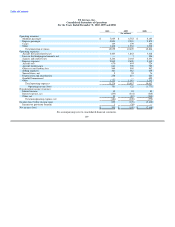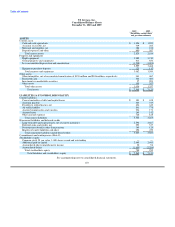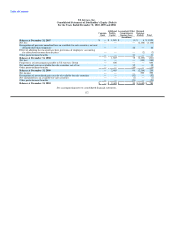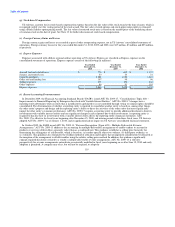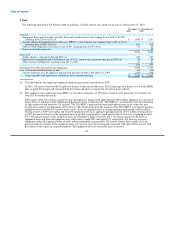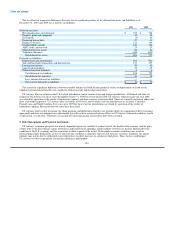US Airways 2010 Annual Report Download - page 120
Download and view the complete annual report
Please find page 120 of the 2010 US Airways annual report below. You can navigate through the pages in the report by either clicking on the pages listed below, or by using the keyword search tool below to find specific information within the annual report.
Table of Contents
(q) Stock-based Compensation
US Airways accounts for its stock-based compensation expense based on the fair value of the stock award at the time of grant, which is
recognized ratably over the vesting period of the stock award. The fair value of stock options and stock appreciation rights is estimated
using a Black-Scholes option pricing model. The fair value of restricted stock units is based on the market price of the underlying shares
of common stock on the date of grant. See Note 13 for further discussion of stock-based compensation.
(r) Foreign Currency Gains and Losses
Foreign currency gains and losses are recorded as part of other nonoperating expense, net in US Airways' consolidated statements of
operations. Foreign currency losses for the years ended December 31, 2010, 2009 and 2008 were $17 million, $3 million and $25 million,
respectively.
(s) Express Expenses
Expenses associated with affiliate regional airlines operating as US Airways Express are classified as Express expenses on the
consolidated statements of operations. Express expenses consist of the following (in millions):
Year Ended Year Ended Year Ended
December 31, December 31, December 31,
2010 2009 2008
Aircraft fuel and related taxes $ 770 $ 609 $ 1,137
Salaries and related costs 23 23 21
Capacity purchases 1,681 1,652 1,621
Other rent and landing fees 107 99 96
Selling expenses 173 154 163
Other expenses 86 91 101
Express expenses $ 2,840 $ 2,628 $ 3,139
(t) Recent Accounting Pronouncements
In December 2009, the Financial Accounting Standards Board ("FASB") issued ASU No. 2009-17, "Consolidations (Topic 810) –
Improvements to Financial Reporting by Enterprises Involved with Variable Interest Entities." ASU No. 2009-17 changes how a
reporting entity determines when an entity that is insufficiently capitalized or is not controlled through voting (or similar rights) should be
consolidated. The determination of whether a reporting entity is required to consolidate another entity is based on, among other things,
the other entity's purpose and design and the reporting entity's ability to direct the activities of the other entity that most significantly
impact the other entity's economic performance. ASU No. 2009-17 requires a reporting entity to provide additional disclosures about its
involvement with variable interest entities and any significant changes in risk exposure due to that involvement. A reporting entity is
required to disclose how its involvement with a variable interest entity affects the reporting entity's financial statements. ASU
No. 2009-17 is effective for fiscal years beginning after November 15, 2009, and interim periods within those fiscal years. US Airways
adopted ASU No. 2009-17 as of January 1, 2010, and its application had no impact on US Airways' consolidated financial statements.
In October 2009, the FASB issued ASU No. 2009-13, "Revenue Recognition (Topic 605) – Multiple-Deliverable Revenue
Arrangements." ASU No. 2009-13 addresses the accounting for multiple-deliverable arrangements to enable vendors to account for
products or services (deliverables) separately rather than as a combined unit. This guidance establishes a selling price hierarchy for
determining the selling price of a deliverable, which is based on: (a) vendor-specific objective evidence; (b) third-party evidence; or
(c) estimates. This guidance also eliminates the residual method of allocation and requires that arrangement consideration be allocated at
the inception of the arrangement to all deliverables using the relative selling price method. In addition, this guidance significantly
expands required disclosures related to a vendor's multiple-deliverable revenue arrangements. ASU No. 2009-13 is effective
prospectively for revenue arrangements entered into or materially modified in fiscal years beginning on or after June 15, 2010 and early
adoption is permitted. A company may elect, but will not be required, to adopt the
119


